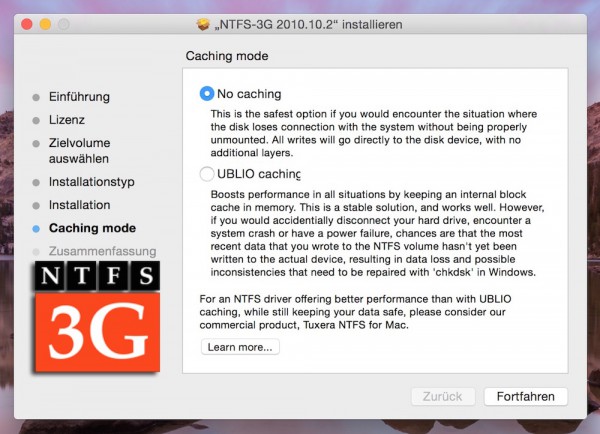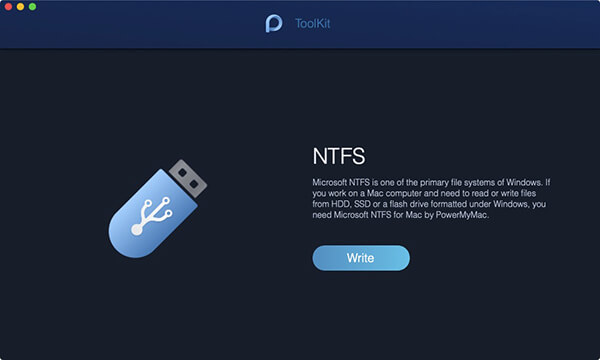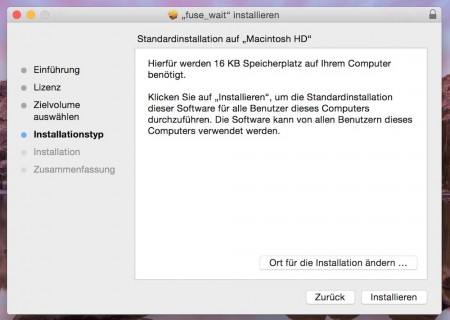
Then run the following to replace the binary that’s run by OSX with our script: sudo touch /sbin/mount_ntfsįinally, paste the following into the editor that should have been opened by the last command above: then Once it’s done building and installing everything, rename the mount_ntfs binary to keep it as a backup (make sure you unmount / eject any active NTFS volumes first): sudo mv /sbin/mount_ntfs /sbin/mount_ntfs.orig This should pull up OSXFuse as a dependency automatically.
#NTFS 3G MAC INSTALLIEREN INSTALL#
To install OSXFuse and NTFS-3G, just run at a terminal: sudo port install ntfs-3g This borrows heavily from my original guide, so if you want more details, look there. Method 3: Building everything from MacPorts Then just follow the instructions from there to install.

If everything goes well, it should build NTFS-3G and generate an install image exactly like the one from method 1 (let me know if you get problems along the way). Add execute permissions to it and run it. You can install either the pre-built image from the developer, or the MacPorts version with: sudo port install osxfuse Open it.Īfterwards, run the Switch script that’s also inside the install image.įollow the instructions shown on the terminal.

Method 1: The Easy Way – Just install pre-built imagesĭownload this install image (MD5: 01e032f70a594b5cf3e345234297a678). After you get NTFS-3G working through any of the methods described here, you can reenable SIP.įor methods 2 and 3, you will need to install XCode (whatever latest version there is for your macOS version) and MacPorts.

Just google “ osx disable system protection”.
#NTFS 3G MAC INSTALLIEREN HOW TO#
There are plenty of guides around on how to do this, so this is not something I’m going to cover here. However, in any case, before you go through with any of the methods below, you will need to disable System Integrity Protection in order to install the required files, since they work at system level. I’ll start with the easiest way and build up to the more complex one. The difference is just how much control you want to have over the process. There are three ways you can go about this, and they are pretty much the same when it comes to the end result and how things look like when you’re finished. The steps are pretty much the same as the “Fuse4x + NTFS-3G from MacPorts” section on my original guide from 2011 (jeez, I’m feeling old now), only with a few tweaks here and there. Ok, so basically this relies on using OSXFuse together with NTFS-3G. Eventually OSXFuse 3.x was officially released, and so this is what I’ve been using since then. So it turns out almost a year later after that, an OSXFuse preview (3.x branch) release was finally released, and it had the fix for the problem. Then on my post from 2014 I mentioned that issue was tracked on github, and fixed on a development branch, but there were no timetable on when it would make into a end-user release. Those few who followed the previous posts, will probably remember that on my post from 2013 I mentioned the bug with OSXFuse not purging the mount directory when an NTFS volume is unmounted, which caused the next mount operation to create a new (different) directory, which messed up things specially if you had linked resources on your OSX install.

Skip to after the blurb if you don’t care. I just never got around to writing a post about it.įirst, a little recap. What I’m going to describe is a setup I’ve been working with for a couple years already. It’s been a long time, but I think this subject deserves a closure.


 0 kommentar(er)
0 kommentar(er)
